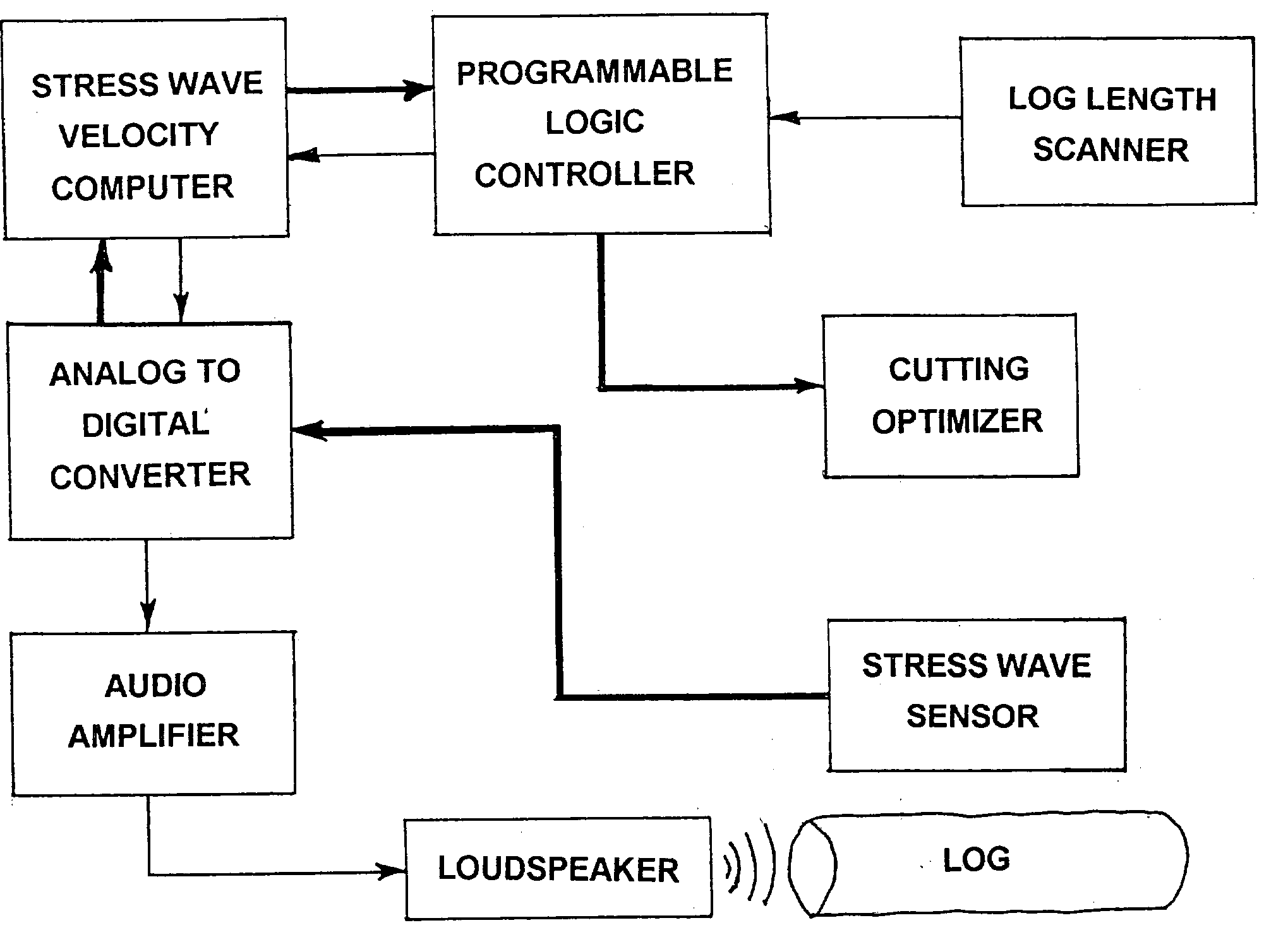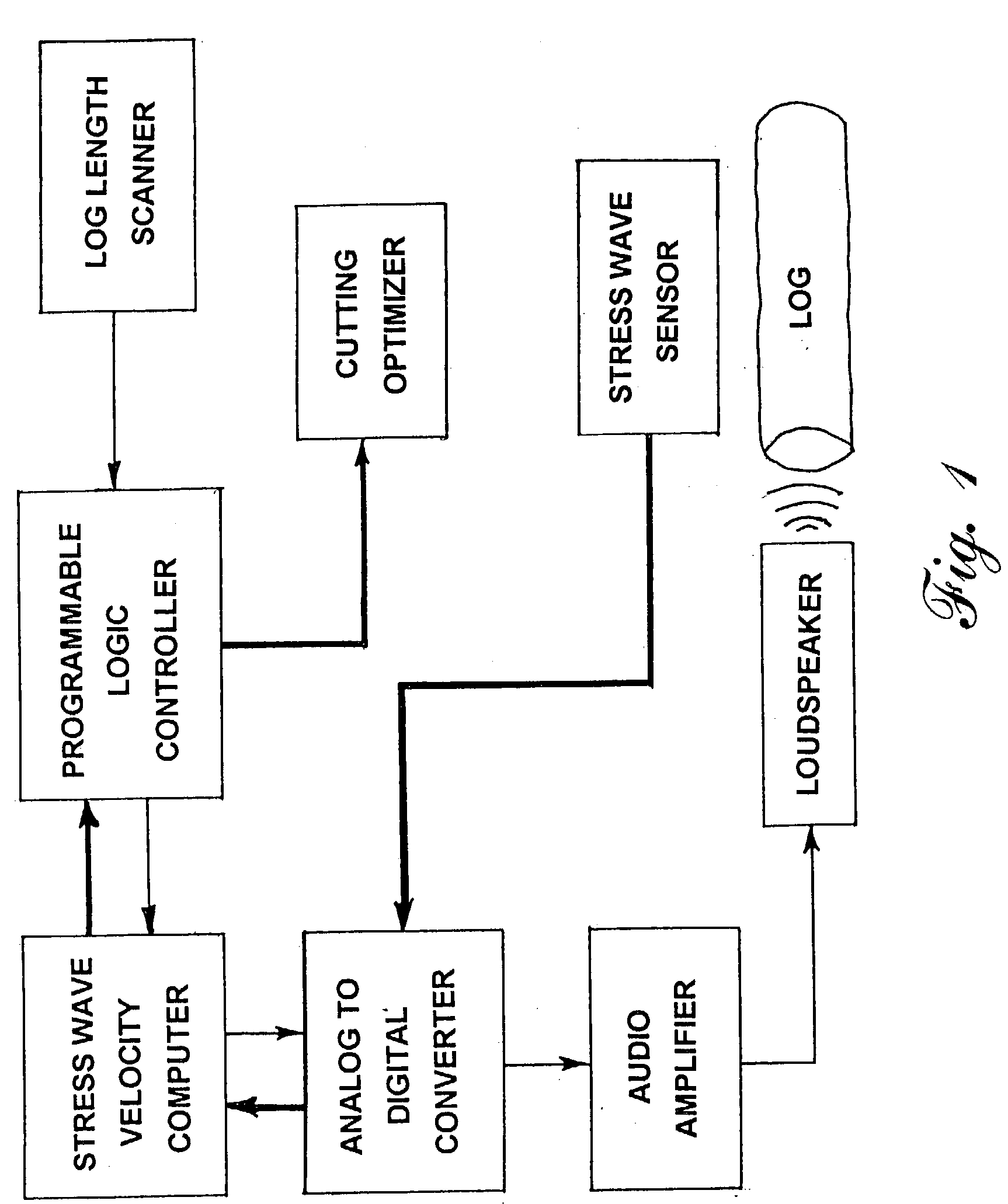Method for determining physical properties of wood
- Summary
- Abstract
- Description
- Claims
- Application Information
AI Technical Summary
Benefits of technology
Problems solved by technology
Method used
Image
Examples
example 1
[0024] A green Douglas-fir log having a length of 11.6 ft (˜3.5 m), a major end diameter of 14 in (0.35 m) and a minor end diameter of 12 in (0.30 m) was used for the following laboratory tests. Experience has shown that the average resonant frequency for a log of this species and length would be expected to fall within the range of about 350-650 Hz. Referring to FIG. 1, log length data were input manually and the log was not intended to be sawn. The stress wave velocity computer was an off-the shelf personal computer. The analog to digital converter (A / D) card used in the computer was supplied by National Instruments, Austin, Texas. The audio amplifier was a Model World 2.1 Stewart Audio Amplifier supplied by Stewart Electronics, Columbia, Calif. The loudspeaker was a standard Pro Power 15 inch JBL W15GTi subwoofer purchased from an audio supply store. The stress wave sensor was a Model 8702B50 accelerometer supplied by Kistler Instruments Corp, Amherst, N.Y. It will be understood ...
example 2
[0030] As seen in FIGS. 5-7, the Douglas-fir log of the previous example was again used but the time of the swept signal was reduced to 0.01 second. Excellent results were obtained with the shorter sweep time, the resonant frequency of 512 Hz comparing closely with that determined by the longer pulse time.
example 3
[0031] In similar fashion to Example 2 and as seen in FIGS. 8-10, the time for the swept frequency pulse was again shortened to 0.005 seconds. Once again a sharp resonance peak was seen at 516 Hz, almost identical to the responses seen with the 0.2 or 0.01 second pulse durations. The advantage of being able to use these shorter sweep times cannot be overemphasized, especially in fast moving the environment of a mill situation. It opens the possibility of making the measurement without stopping movement of the log being measured.
PUM
 Login to View More
Login to View More Abstract
Description
Claims
Application Information
 Login to View More
Login to View More - R&D
- Intellectual Property
- Life Sciences
- Materials
- Tech Scout
- Unparalleled Data Quality
- Higher Quality Content
- 60% Fewer Hallucinations
Browse by: Latest US Patents, China's latest patents, Technical Efficacy Thesaurus, Application Domain, Technology Topic, Popular Technical Reports.
© 2025 PatSnap. All rights reserved.Legal|Privacy policy|Modern Slavery Act Transparency Statement|Sitemap|About US| Contact US: help@patsnap.com



